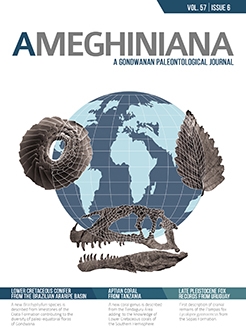Two upper Permian trackways attributed to the ichnogenus Sukhonopus, regarded as pareiasaurian, have been studied. The longer trackway includes 15.5 locomotor cycles. Statistical analysis of its dimensions indicated that the gait was a lateral-sequence walk close to the slow pace. This conclusion gained additional support through a comparison of dimensions of the two trackways with the glenoacetabular-to-pes length ratio measured on the skeletons of the pareiasaur Deltavjatia. With the sprawling limb posture typical to lower tetrapods, the pace can only be performed with body rocking from side to side, according to the principles of passive-dynamic walking. A natural-sized model of the Sukhonopus producer was built. This model reproduces the passive-dynamic rocking pace, being driven manually by pulling it forward by the rope and simultaneously pushing it from side to side. The passive-dynamic rocking pace of pareiasaurs, proved to be feasible by the model, requires functional differentiation of the hindlimbs and the forelimbs. The former were more appropriate for propulsion, while the latter were more efficient in the generation of the transverse forces required to pump the rocking motion. It is hypothesized that this walking mechanism was associated with an archaic deficiency of nervous and muscular supply of the limbs. Possibly, it was also employed by some other Paleozoic tetrapods. The ichnological evidence of this locomotion technique is the inward turn of the forelimb footprints. The histological evidence is the extensive development in the long limb elements of spongy bone tissue which helps dampen collisions associated with rocking.
How to translate text using browser tools
18 December 2020
Passive-Dynamic Walkers of the Late Paleozoic
Alexander N. Kuznetsov
ACCESS THE FULL ARTICLE

Ameghiniana
Vol. 57 • No. 6
December 2020
Vol. 57 • No. 6
December 2020
Análisis de marcha
Caminata pasiva
gait analysis
Glenoacetabular length
Ingeniería inversa
Longuitud glenoacetabular
Pace-like walk




